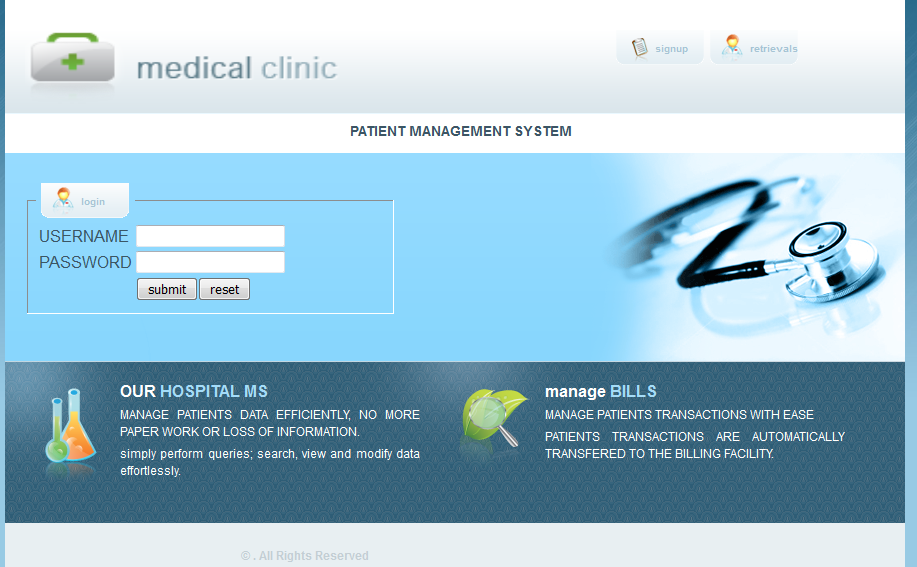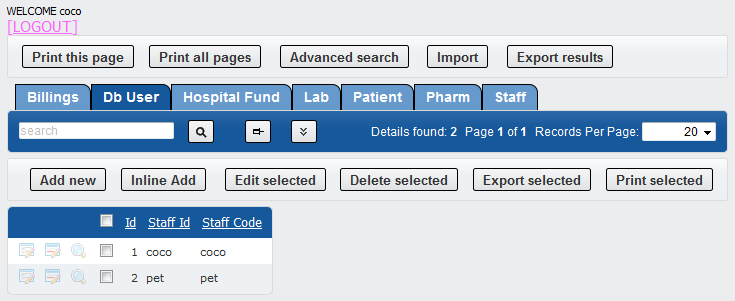Design and Implementation of a Computerised Patient Management System

Design and Implementation of a Computerised Patient Management System
Chapter One of Design and Implementation of a Computerised Patient Management System
INTRODUCTION
According Jantz (2001) the emergence of computer based information system has changed the world a great deal, both large and small system have adopted the new methodology by use of personal computer; to fulfill several roles in the production of information therefore computerizing the documentation of patient record to enable easier manipulation of the input process and output will bring us to this existing new world of information system. Patients records and disease pattern documentation is concerned with documentation of information obtained from patients and their particular health system in order to function properly. If this information is not documented perfectly causing some data to get misplaced, the health system will not be efficient.
According tang (2001) In examine the document system that in existence at the hospital that is mostly manual much importance has been placed on creating a system that document the inpatient record using a computerized database system with a secure procedure for accessing it. One of the unit of the std/aids control program (STD/HCP) a server doctor at consultant level who is assisted by 3 doctors, a secretary, 5 medical assistance7 nurses trained consolers and part time statisticians and 2 laboratory technologists head of units. The various diseases managed at the unit include the following syphilis, virgin its, molluscus, scabies‟, pubic lice, gonorrhea, trichomoiasis, gentle mart etc.
Patient information past and present is extremely vital in the provision of patient‟s care which guides the physician in the making of right decision about the diagnosis. The rapid growth of information technology and system made to choose the health care industry to borrow a page from the air industry for the sake of patient‟s safety. Pilots have instant access to the data they need in whether condition and mechanical function to make information decision about navigation and delay.
PROBLEM STATEMENT
The absence of a well established information system to serve patient and staff has led to inconveniences. This has tantamount to the loss of patient and staff records. This is basically because of the weakness of the existing system which includes over reliance on paper based work. Paper files consume a lot of the office space, slow recording, processing and retrieval of patient details. Accessing and sharing of information by different departments is difficult due to poor information management.
OBJECTIVES OF THE STUDY
The main objective of the study is to design and implement an information system for patients in a hospital. Specific objectives of the study are:
- To develop a secure system that protects patient data and other vital information of the hospital.
- To design and implement a patient information management system (PIMS)
SCREEN SHOTS OF THE APPLICATION



DEFINITION OF OPERATIONAL TERMS
Hospital: is defined as the entity that provides the medical services to the patient in questioned at a given period of time which is basically curative and preventive and is offered in clinic unit x-ray/ ultra sound, laboratory and dental unit in the hospital.
Patient Record Management System: It is a system that can manage multiple administrators and can have the track of the right assigned to them. It makes sure that all the Administrators function with the system as per the rights assigned to them and they can get their work done in efficient manner. Medical Form: it refers to the medical document describing the patient initials, diagnoses and treatment of a particular patient in question that can be used for future reference incase of no improvement in the health condition of the patient hence changes can be carried out accordingly.
Consultations Fee: is the money paid by the patient in question at the receptionist desk before any medical attention.
REFERENCES
Mennel, P.A (2006) “management information systems” information management vs. decision making. Loudon.
2. Ervin, J. R (2000) “Dynamic delivery of information via the world wide web” library Hi tech 18, 1:55-60.
3. Conte (1999) “information management systems in organizations” information management and technology: prentice hall.
4. Melogoza, P. and Gyeszly, S.D (2002) “Information overloads”.
collection building 21, 1:32-42. 6. Bapco, W. (2008) “information management breakdown” information management in organizations 7. Jantz, R. (2001) “Knowledge management in academic libraries: Special tools and processes to support information professionals‟ reference service services review 29, 1:33-39.
